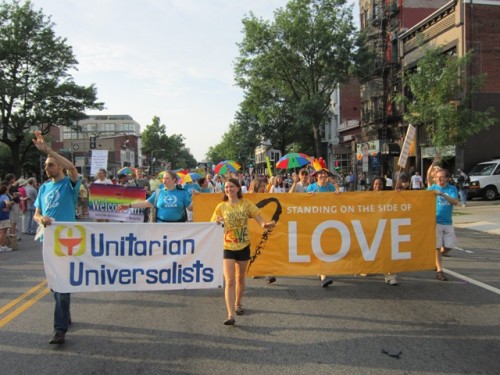Today the Supreme Court of the United States issued a ruling in Hosanna-Tabor Church v. Equal Employment Opportunity Commission, which centered on the question of whether an employee of a religious organization could be fired without recourse to anti-discrimination laws if they were ordained within said faith. The case heard by the Supreme Court involved a teacher at a Lutheran school who was fired due to a sleep disorder. The Equal Employment Opportunity Commission, backed by the Justice Department, felt that her role at the school was largely secular in nature, and shouldn’t fall under the exceptions usually given to clergy within religious groups. However, the court, in a rare unanimous ruling, sided with Hosanna-Tabor Church, and for the first time, acknowledged that a ministerial exception from federal discrimination laws does exist.
“Closing the courthouse door much of the way, but not completely, to workplace bias lawsuits by church employees who act as ministers to their denominations, the Supreme Court on Wednesday unanimously gave its blessing — for the first time — to a “ministerial exception” to federal, state and local laws against virtually all forms of discrimination on the job. The Court’s ruling, which only Justice Clarence Thomas said did not go far enough, did not order courts to throw out all such lawsuits as beyond their jurisdiction, but it left them with only a narrow inquiry before the likely order of dismissal would come down. As soon as the denomination makes its point that it counts an employee as a “minister,” within its internal definition, that is probably the end of the case. And the employee could be anyone from the congregational leader, on down to any worker considered to be advancing the religious mission.”
In short, ministerial exception involves not only ministers, but any employee who is performing religious work within a faith group. This was plainly expressed in the concurring opinion of Justice Alito and Justice Kagan, who noted that many religions do not use the term “minister” and that “courts should focus on the function performed by persons who work for religious bodies.”
“The First Amendment protects the freedom of religious groups to engage in certain key religious activities, including the conducting of worship services and other religiousceremonies and rituals, as well as the critical process of communicating the faith. Accordingly, religious groupsmust be free to choose the personnel who are essential tothe performance of these functions. The “ministerial” exception should be tailored to this purpose. It should apply to any “employee” who leads a religious organization, conducts worship services or important religious ceremonies or rituals, or serves as a messenger or teacher of its faith. If a religious group believes that the ability of such an employee to perform these key functions has been compromised, then the constitutional guarantee of religious freedom protects the group’s right to remove the employee from his or her position.”
This concurring opinion will no doubt be very welcome to a coalition of minority faiths, the Muslim-American Public Affairs Council, United Sikhs, Church of the Lukumi Babalu Aye, International Society for Krishna Consciousness, O Centro Beneficente Uniao Do Vegetal, and Templo Yoruba Omo Orisha, who filed an amicus brief in this case warning that they were particularly susceptible to judicial encroachment, and that their faiths often categorize what might be seen as “secular” work within a sacred context.
“…many seemingly secular activities take on deep religious significance within specific faith traditions. For Sikhs, for example, operating a community kitchen and providing meals (langar) to the needy and vulnerable is an indispensible element of religious worship. For some temple-centric religions, the actual process of constructing a temple carries deep religious significance. Hindu temple architects and artisans follow ancient religious traditions in their work. For others, temple overseers may be tasked specifically to ensure that construction workers follow religion-based standards and refrain from profane acts that might desecrate the temple. For other religious organizations, meditation is a form of worship, distributing aid through prescribed means is an essential sacred ritual, and counseling and healing are acts inspired by deity. But because such religious functions – at least from the external view – may be indistinguishable from the same activities carried out for secular purposes, courts trying to parse the sacred from the profane jeopardize the ability of religious organizations to define and carry out their own sacred missions.”
The court agreed with this view, noting that the “amount of time an employee spends on particular activities is relevant in assessing that employee’s status, but that factor cannot be considered in isolation, without regard to the nature of the religious functions performed.” Justice Roberts went on to say that the lower court’s ruling “placed too much emphasis on Perich’s performance of secular duties.”
I don’t think it is hyperbole to say that this is a landmark ruling, enshrining the concept of ministerial exception in our highest court, and all but eliminating workplace discrimination suits if the plaintiff performs a significant religious role within an organization. That said, the court did stress that this doesn’t protect religious organizations from criminal investigation or other kinds of litigation, and should only be applied to the hiring and firing of “ministers”. How broad or narrow the understanding of “ministerial” duties will be is something that will no doubt be settled in the courts for years to come. For minority faiths, it seems to signal that the ministerial exception isn’t isolated to traditional minister-congregational models, and can be applied to any number of religious situations. What the ramifications might be for adherents to non-Christians models of worship and work remains to be seen.
You can read my original post regarding this story, here. For extensive links to documents and analysis of this case, do check out the information-packed SCOTUSblog.















